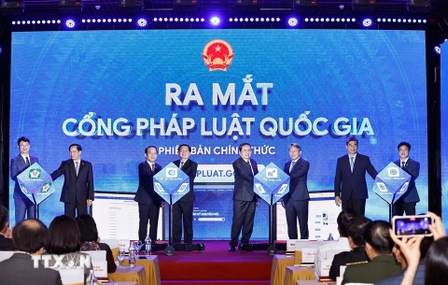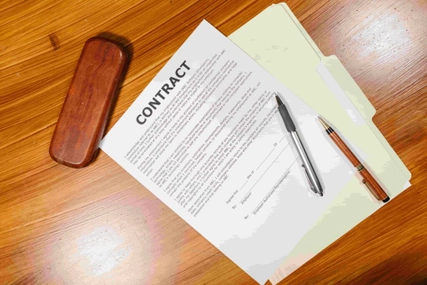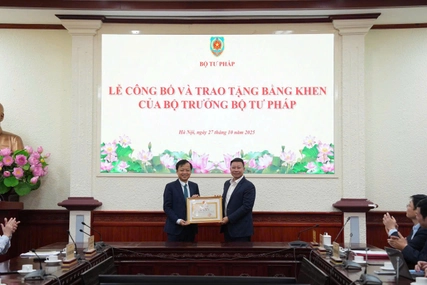Do you have a breakthrough idea or new technical solution in Vietnam and want to protect it without being encumbered by the strict requirements of conventional patent protection? Consider registering for protection in the form of “Utility Solutions”, which may be the ideal solution to protect your intellectual property (IP) rights.
- 1. Rights: What Rights and Benefits Do Utility Solution Owners Enjoy?
- 2. Obligations: What Obligations Do Utility Solution Holders Have?
- 3. Advantages: What Advantages Does Utility Solution Registration Offer?
- 4. Strategic Actions After Utility Solution Registration: What Should Owners Do?
- 5. Extending The Exclusivity Period For Patent/Utility Solution Owners: Is It Possible And How?
Registering technical innovations and improvements (solutions) for protection in the form of utility solutions offers a simple and quick method to safeguard intellectual property rights, without necessitating "inventiveness" - a prerequisite for patent protection. This distinction renders utility solutions an appealing option, particularly suitable for technical solutions that may not meet the stringent inventiveness criteria required for patent protection but still require protection to gain a competitive edge in the marketplace.
KENFOX IP & Law Office provides answers to 5 important questions about utility solution protection in Vietnam, helping you not only to better understand how to effectively manage and protect your intellectual property but also to maximize the value of your new ideas or technical solutions in Vietnam.
1. Rights: What Rights and Benefits Do Utility Solution Owners Enjoy?
After a utility solution application is submitted and fully meets the statutory requirements for protection in Vietnam, the utility solution owner will be granted a Utility Solution Patent. This patent serves as legal evidence that the utility solution has been officially registered and receives legal protection. Utility solution owners enjoy the following exclusive rights under Article 123 of the current IP Law.
[1] Right to use: Using and permitting others to use the registered utility solution as prescribed under the law. Such use comprises of:
(i) Manufacturing the protected product;
(ii) Applying the protected process;
(iii) Exploiting utilities of the protected product or the product manufactured under the protected process;
(iv) Circulating, advertising, offering or stocking for circulation the products stipulated in item (iii);
(v) Importing the products stipulated in item (iii).
[2] Right to prevent others from using: Prohibiting others from using the registered utility solution (excluding exceptions according to IP law);
[3] Right of disposal: The owner has the right to decide to transfer or license the use of the utility solution to others at their own discretion.
2. Obligations: What Obligations Do Utility Solution Holders Have?
After being granted a Utility Solution Patent, the owner must fulfill certain legal obligations to avoid the risk of losing intellectual property rights, ensure their rights, and maintain the validity of the protection title. These obligations include the following:
Under the IP law, to avoid the risk of losing utility solution rights, Utility solution owner are required to fulfill several responsibilities, including:
[1] Annual payment of annuities: Utility Solution owners are required to pay an annuity within six months before the end of each year of the validity period, throughout the protection term. An application for late payment of annuity to maintain validity can be submitted, but not later than six months from the end of the validity term, subject to an additional late annuity fee. Failure to pay this fee may result in the termination of the patent, as stipulated in Article 95.1(a) of the Intellectual Property Law.
[2] Remuneration to inventors: The owner of a utility solution is required to pay remuneration to the author in accordance with regulations, ensuring fair compensation for their creativity. Article 135 of the Intellectual Property Law specifies that, unless otherwise agreed, the owner must pay remuneration, comprising 10% of the pre-tax profit earned from using the utility solution and 15% of the total pre-tax proceeds from each transfer of usage rights. In cases involving multiple authors, this remuneration is divided among co-authors according to their agreement
[3] Manufacturing protected products or applying protected processes: The utility solution owner is required to produce protected products or apply protected processes to meet national defense, security, disease prevention, treatment, nutritional requirements, or other urgent societal needs as outlined in Article 136 of the Intellectual Property Law. If the utility solution owner fails to fulfill this obligation when the specified need arises, the competent state agency may transfer the utility solution to another person without the owner's permission.
Understanding the obligations that come with being granted a utility solution Patent helps owners proactively manage and minimize the possibility of legal disputes, avoid the risk of losing exclusivity, and optimize economic benefits from their intellectual property rights.

3. Advantages: What Advantages Does Utility Solution Registration Offer?
A utility solution patent offers numerous advantages to the owner, both legally and economically, including:
[1] Exclusivity: Owners have sole commercial rights over their utility solutions, preventing unlawful use by others.
[2] Enforcement: Utility Solution registration serves as solid evidence of ownership, facilitating lawsuits or enforcement against infringements.
[3] Deterrence: A Utility Solution patent is an effective legal tool that helps deter potential infringers, minimizing the risk of unauthorized use through a clear awareness of the legal risks involved.
[4] Revenue: Utility Solution registration offers multiple avenues for revenue generation through direct use, exploitation of ownership rights, licensing, or transferring use rights to third parties. This not only recovers investment costs and enhances the economic value of the Utility Solution but also contributes to the growth and sustainable development of the business.
4. Strategic Actions After Utility Solution Registration: What Should Owners Do?
Considering the rights and obligations of utility solution owners and the growing concern regarding intellectual property infringement, they should take the following strategic actions to protect their registered utility solution.
[1] Using the utility solution in business activities: Utilize and commercially exploit the utility solution to generate revenue for the owner and benefit the community as much as possible.
[2] Monitoring new utility solution filings: Owners should closely monitor new utility solution applications in the same or related industry. This approach helps identify potential violations early and allows for proactive intervention with legal measures such as filing oppositions, third-party observations, or utility solution invalidation requests if necessary.
[3] Appropriate enforcement: In the event of detecting infringement or unauthorized use of utility solution, the owner should promptly take legal measures such as sending cease-and-desist letters, initiating negotiations, or pursuing litigation if necessary.
Applying these strategies not only protects the interests of owners but also enhances competitiveness in the market. However, owners also need to pay attention to the validity period of the protection certificate to ensure proper strategic planning, maximizing the effectiveness of investment in protection and the exploitation of utility solutions
5. Extending The Exclusivity Period For Patent/Utility Solution Owners: Is It Possible And How?
The extension or broadening of the exclusive rights of a patent/utility solution holder, often referred to as the “evergreening” strategy, is a common technique used by patent owners to maximize the recovery of investment costs spent on research and development. Evergreening encompasses various legal, business, and technological strategies that manufacturers (owners) employ to extend the life of their expiring patents/utility solutions and maintain revenue from them.
In the world, many inventions are not entirely novel solutions but rather small changes or improvements on previously protected products or processes. Vietnamese law does not prohibit owners from developing and enhancing existing technical solutions and registering them for protection, provided these improvements meet the statutory protection standards. For instance, a company may invent a new drug and subsequently, as the original patent nears expiration, obtain a patent for an improved version of that drug, such as a new method of production, a different dosage form, or a modified dosage.
There are a number of different ways to implement an evergreening strategy. Some common methods include:
[1] Making minor changes to the patented product or process: This could involve changing the materials used, the design of the product, or the method of manufacturing the product that were previously protected.
[2] Filing for new patents on new uses of the patented invention: This could involve finding new applications for the invention in different industries or markets.
[3] Filing for new patents on methods of improving the patented invention: This could involve developing new ways to make the product or process more efficient, effective, or safe.
If an effective and well-directed evergreening strategy is established, patent owners can extend the protection of their technical solutions beyond the period provided by the original patent alone. This helps enhance rights and maximize profits for patent owners.

However, it is important to note that with the evergreening strategy, changes or improvements, no matter how small, must still meet the minimum level of protection conditions. They must be new and not common knowledge, or preferably constitute a significant technical and economic advancement to warrant a new patent/utility solution. Otherwise, new applications may be rejected due to lack of novelty or invention previously disclosed by the original patent on which the new applications are based, leading to a waste of time and resources. Therefore, owners should carefully consider the benefits and risks before deciding to apply this strategy.
For effective protection of your invention in Vietnam, please contact KENFOX IP & Law Office. Our team, with extensive practical experience and expertise in intellectual property law, is committed to providing dedicated and accurate advice, ensuring your invention overcomes all legal barriers and is fully protected in Vietnam.
Click here for the Vietnamese article.










